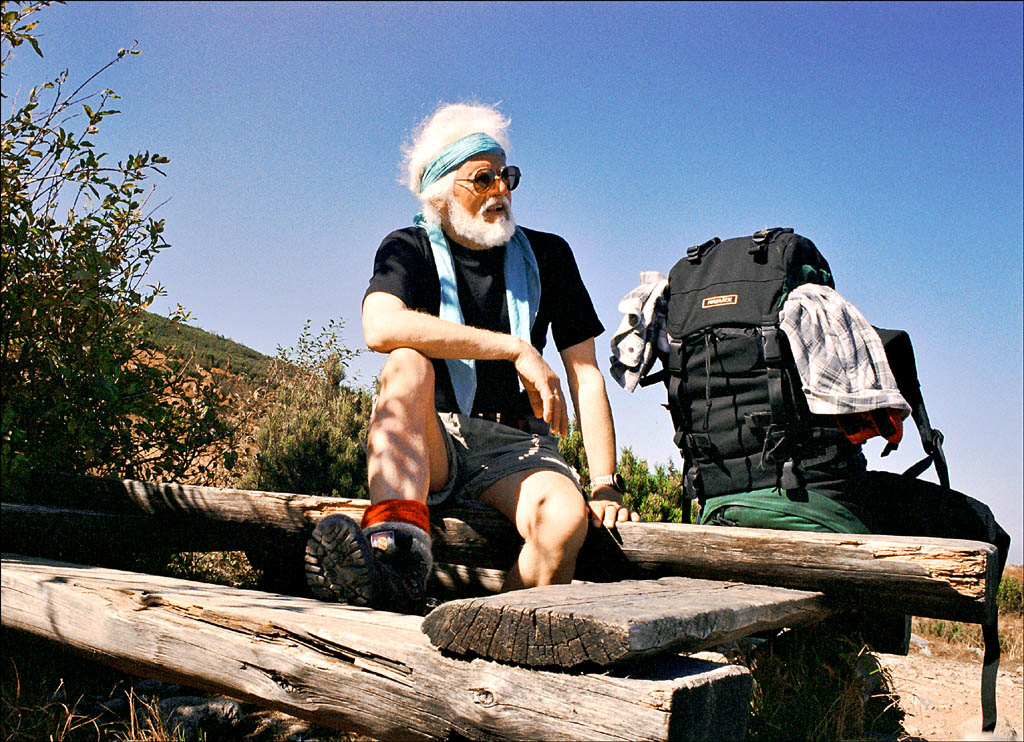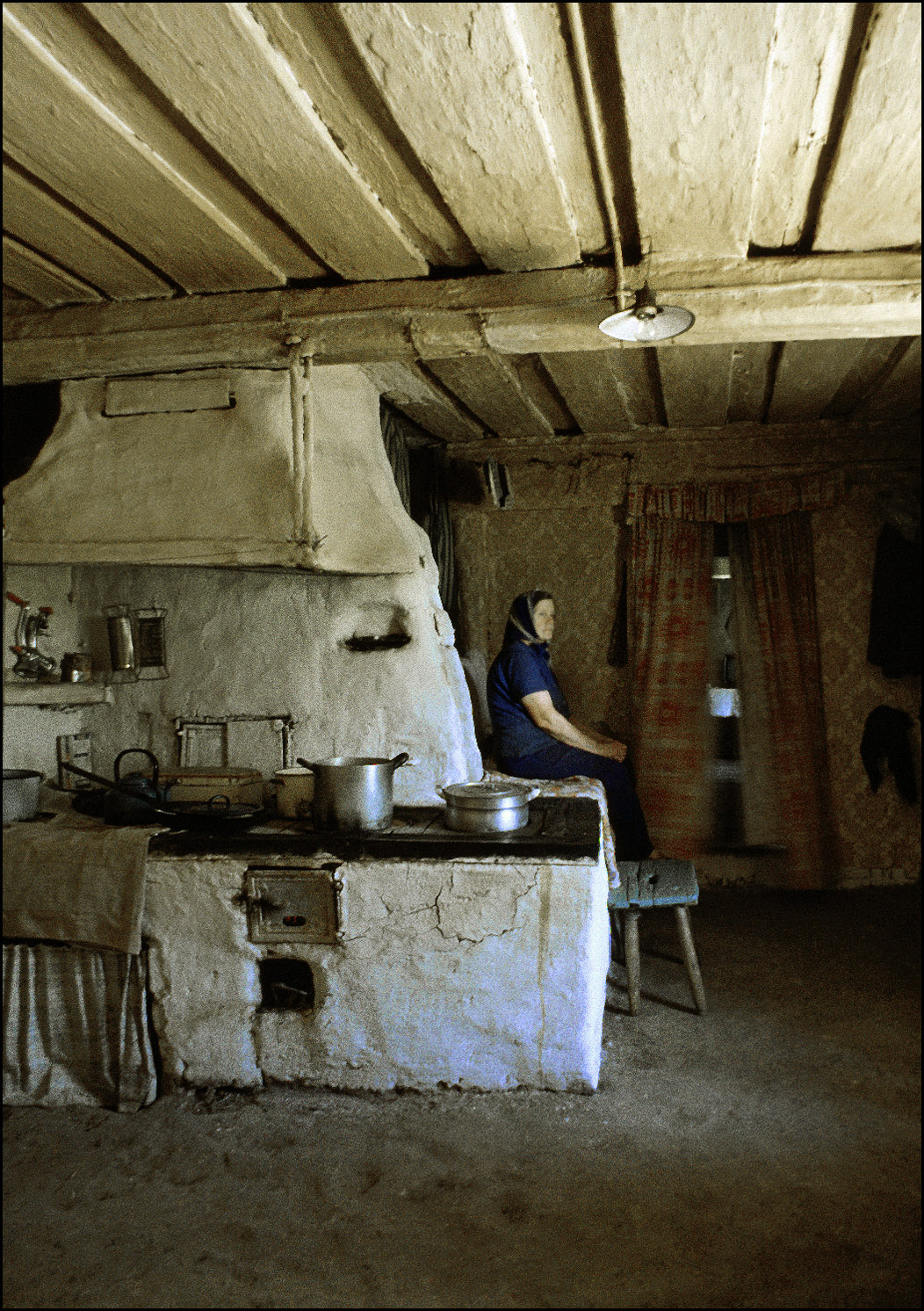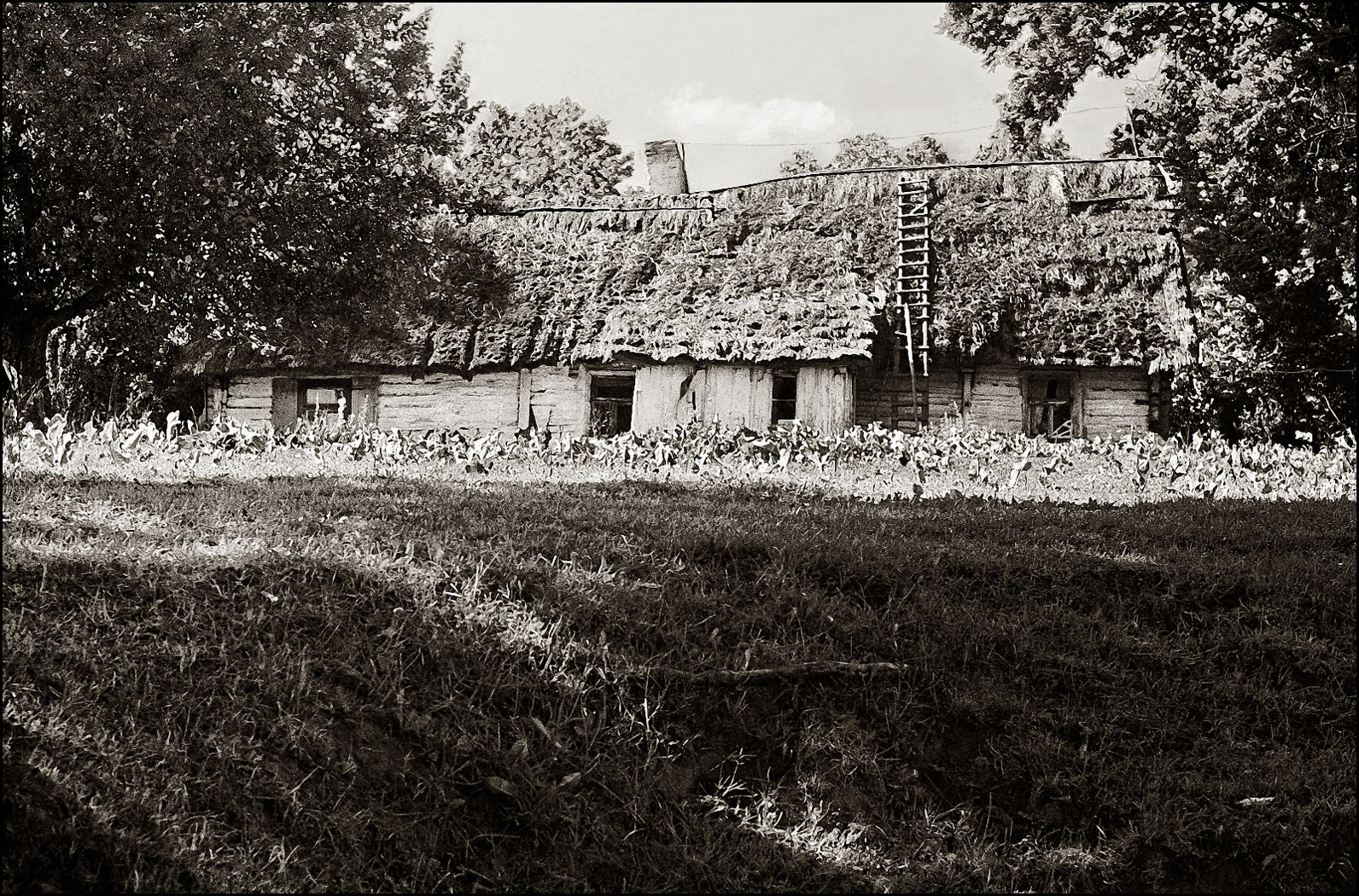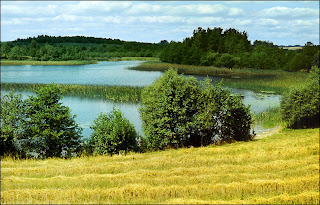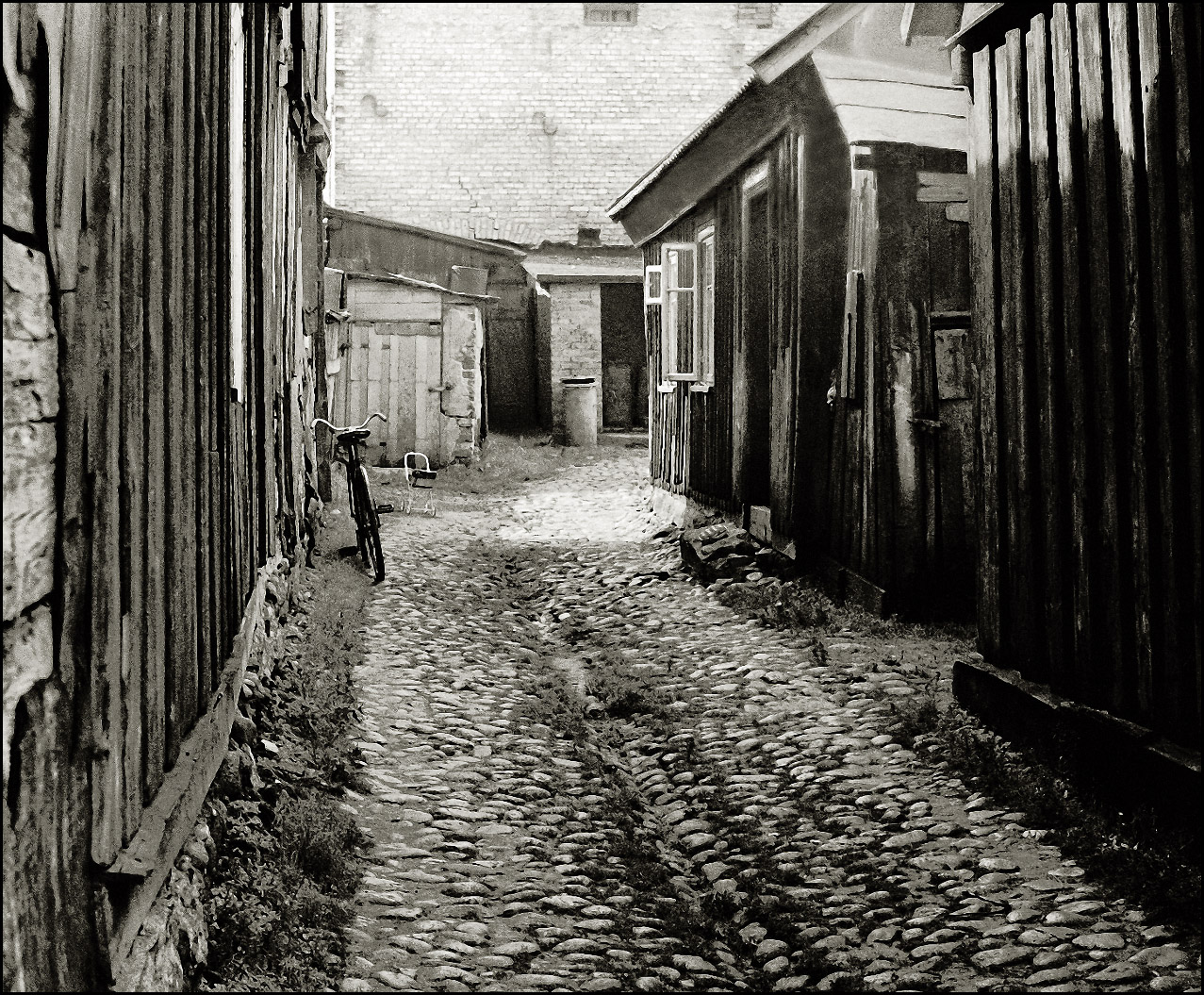The following information was sourced from genealogical reports by Marta Maćkowiak during 2021-2022 in the service of Linda Kalpin (see Vol. I, II). Marta was contacted on Linda’s behalf by her son Amrit Patel thanks to his Polish-American friend Martin Kret who he met at a darkroom printing group at Photo Works in Glen Echo, Maryland.
This is Amrit’s attempt at combining information provided directly by Linda and Marta together with his own research to piece together his ancestry on his mother’s side.
The 2-way fan chart above, showing 8 generations from his son to his son’s great x5 grandfather, Szymon Kulpan, from Trompole, Lithuania, was generated by Amrit using the open source Gramps software.
Name: Czajkowski / Niedźwiecki
City/town/village: Płock / Sośnia
The Czajkowski family
Linda’s maternal grandfather, John Czajkowski, was born in Poland on June 24th, 1893 and died in Kulpmont, PA, US on June 28th, 1952. According to his death certificate, his father was also called John (Polish: Jan).
According to Linda’s information, John was married to Władysława (Lottie) Niedzwiecki, with whom he had five children: Edward, Stella Fischer, Helen Kiayeski, Joseph, and Bertha Kalpin.
 Linda’s mother Bertha Kalpin née1 Czajkowski.
Linda’s mother Bertha Kalpin née1 Czajkowski.
Knowing John’s exact date of birth, his WWI draft card was found which contained his place of birth: Płock.
Roman Catholic vital records (birth, marriage and death certificates) from Płock are well preserved, so it is possible to to trace further ancestors on that side. For example, a start would be to look for John’s birth certificate to learn more information about his parents.
The Niedźwiecki family
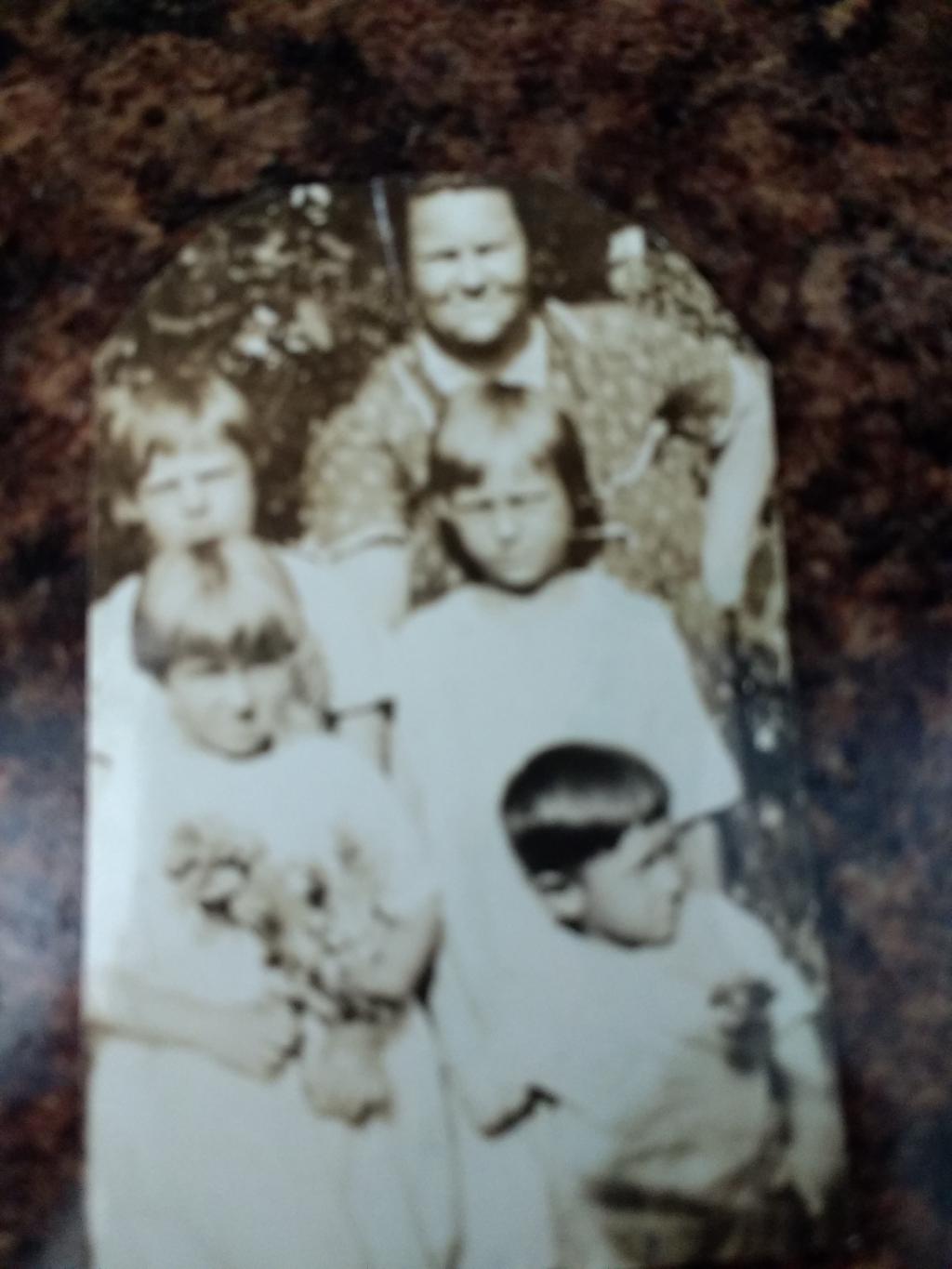 Linda’s maternal grandmother Władysława (Lottie) Czajkowski née Niedzwiecki.
Linda’s maternal grandmother Władysława (Lottie) Czajkowski née Niedzwiecki.
Linda’s maternal grandmother, Lottie Niedzwiecki, was a daughter of Andrew (Polish: Andrzej) Niedzwiecki and Josephine. According to Josephine’s death certificate, she died on March 4th, 1938 at the age of 61. She was born in an unknown place in Poland on September 29th, 1876 to Andrew Laskoski.
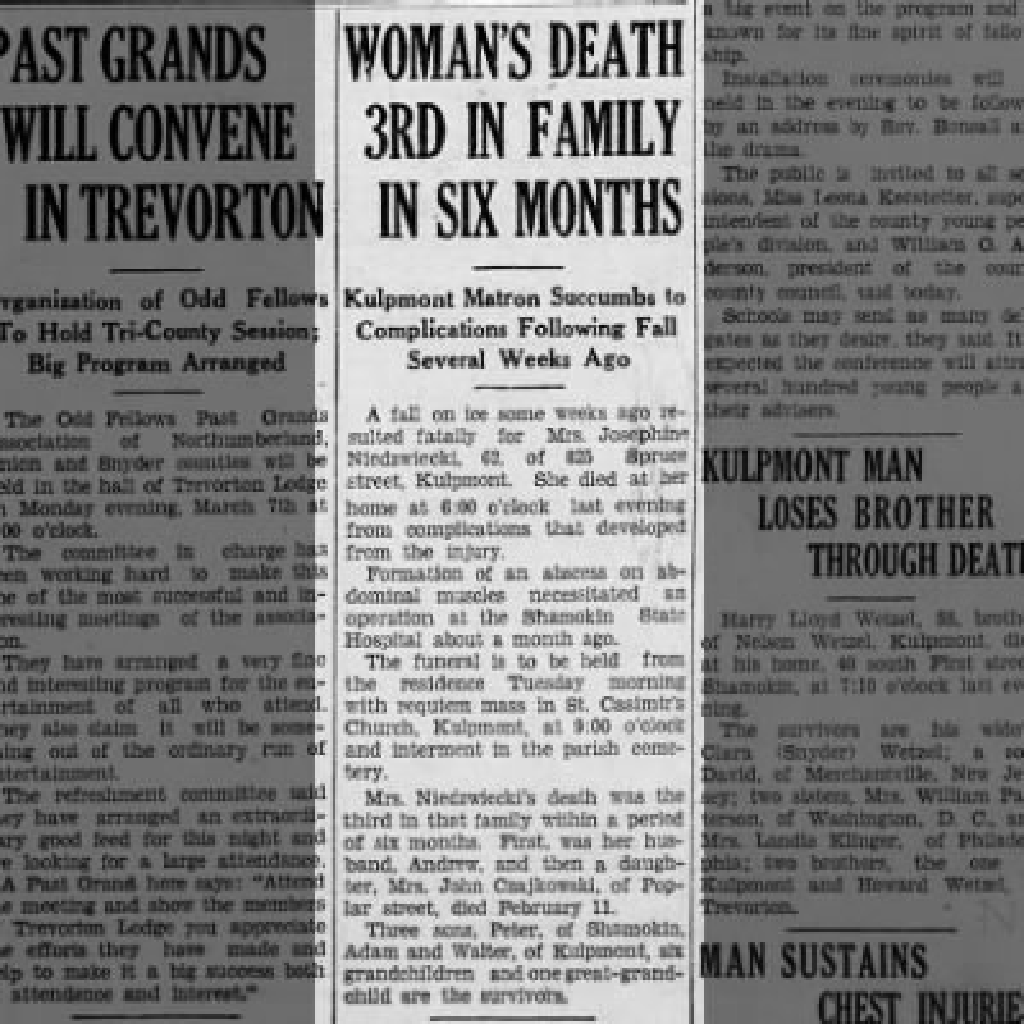
According to the 1920 US census, Andrew and Josephine arrived in the US in 1919; their oldest son, Adam, immigrated in 1912.
While going through the ship manifests, in 1911 a record was found concerning Adam Niedzweiks, a son of Andrzej, who was travelling with older brother Piotr. It seems that Peter is the one who reported Andrew’s death. They departed from Antwerp, Belgium on S.S. Vaderland on August 18th, 1911 and they arrived in the United States on August 29th, 1911. Adam and Piotr were going to join their father, who was already in the United States. According to the document, the brothers were born in a place called something like Slugus or Stupus. It was definitely misspelt.2

Below you see the same name mentioned on the second page of record:

I came across Adam and Peter’s naturalization records. Unfortunately, the documents didn’t contain their exact places of birth (except of Russian Poland). Piotr was born on November 29th, 1895 and Adam was born on October 29th, 1900. According to Adam’s petition he arrived in the US on November 5th, 1912 (instead of August 29th, 1911), but I believe that’s the right person.
Eventually, Piotr’s birth record was found!
He was born in in 1895 in Sośnia (Roman Catholic parish in Białaszewo) to Andrzej Niedźwiecki and Józefa née Laszczkowska.

It confirmed that:
- the family was from Sośnia as we assumed at the beginning,
- Piotr was the oldest child of Andrew and Josephine, and
- the death certificate of Peter Niedzwiecki sent to Linda from Marta by email concerned him.
The vital records from Białaszewo parish (where Sośnia belonged to) are partially preserved and can be accessed for the following years of documents:
- Birth certificates (1890-1911)
- Marriage certificates (1892-1905)
- Death certificates (1890-1907)
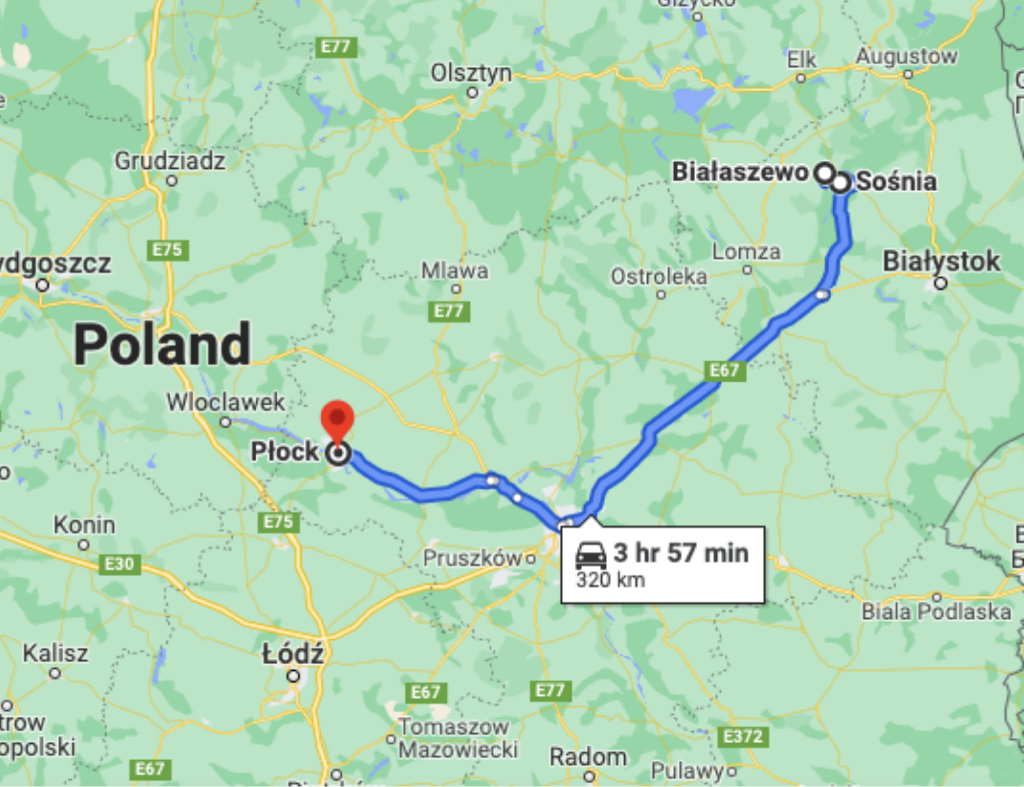
The birth records of Piotr and Adam could be searched for as well as the marriage record of their parents, Andrew and Josephine, to learn the names of their parents.
Name: Kulpan / Mojżesz
City/town/village: Puńsk / Kaletnik
The Mojżesz family
Bronisława (Bridget) Mojżesz née Czajkowski pictured.
Linda’s paternal grandmother, Bronisława (Bridget) Kulpan nee Mojżesz, remarried after her first husband’s (Piotr’s) death and her second last name was Kurpierski. Her second husband lived in New Jersey (Harrison, Kearny or Newark) where she was known to have died in a tragic accident in the early 1950’s. The cemetery she was buried in (Holy Cross Cemetery, North Arlington, Bergen County, NJ) was located during research.

Knowing that Bridget died in 1952, her death record index was found and states that she died in Harrison, Hudson, NJ, US in June, 1952 and the original documents are kept in the New Jersey State Archives, Trenton, New Jersey. The full copy of the original document should be directly obtainable from there and there is a chance that this document will give the names of Bridget’s parents.

Continuing this initial research, a birth record of Bridget was found. She was born in Piotrowa Dąbrowa (that belonged to the Roman Catholic parish in Kaletnik) on April 9th, 1891 to Władysław Mojżesz and Anna née Grzybowska.
Thanks to finding the ship manifest, it was learned that Bridget (Bronisława) left Poland in 1913. She traveled with her son Alfons under the name Kulpan and according to the document they lived in Kaletnik. Since it seemed that Alfons was born in Kaletnik as well, it was assumed that Piotr and Bronisława got married there too. Research was started by looking for their marriage certificate.
Linda’s father Joseph Paul Kalpin.
Linda’s father Joseph Paul Kalpin, the son of Piotr and Bronisława, had 5 brothers: Alfred, Mitchell, Richard, Walter, and Gilmert, and 4 sisters: Lillian, Charlotte, Helen, and Stella.
The Kulpan family
The act in 1910 was found. They got married in Kaletnik in on February 7th, 1910. According to the document, Piotr Kulpan was born in Rejsztokiemie around 1890 to Józef Kulpan and Anna Wiszniewska (sometimes spelt Wiszniowska). Rejsztokiemie is around 10 km far from Kaletnik and belonged to the Roman Catholic parish in Puńsk. The next step was focused on looking for Piotr’s birth certificate and it was found among 1889 records from Puńsk. Piotr was born in Rejsztokiemie on May 17th, 1889 to Józef Kulpan, 38 years old, and Anna Wiszniewska, 36 years old.
In order to learn Józef and Anna’s places of birth as well as names of their parents, the marriage records from Puńsk parish between 1871-1889 were checked. Unfortunately, some years were missing (1873, 1874, 1880, 1882, 1885, 1886) and eventually the act wasn’t found. However, knowing the age of Józef and Anna from Piotr’s birth record, the birth certificates between 1850-1854 were searched.
The bad news is that year 1853 is missing and Anna’s birth certificate could not be found. The good news is that Józef’s act in 1850 was found. Józef Kulpan was born in Wojponiszki (today Vaiponiškė in Lithuania) on February 21st, 1850 to Marcin Kulpan and Rozalia (also spelt Rozalja, Roza) née Andruszkiewicz. Furthermore, I also managed to find Marcin and Rozalia’s marriage certificate which gave us new information about further ancestors.
They got married in Puńsk on November 16th, 1847. Marcin Kulpan was 31 years old and was born in Trompole to Szymon Kulpan and Anna née Dytkiewicz, Rozalia Andruszkiewicz was 22 years old and was a daughter of Antoni Andruszkiewicz and Apolonia née Walenta.
It was noticed that the death certificates from Puńsk are well preserved and accessible until 1920. If Piotr’s mother, Anna Kulpan née Wiszniewska died between 1910-1920, her death record could be searched for. It should give the names of her parents and enable tracing of further ancestors on this side of the family as well.
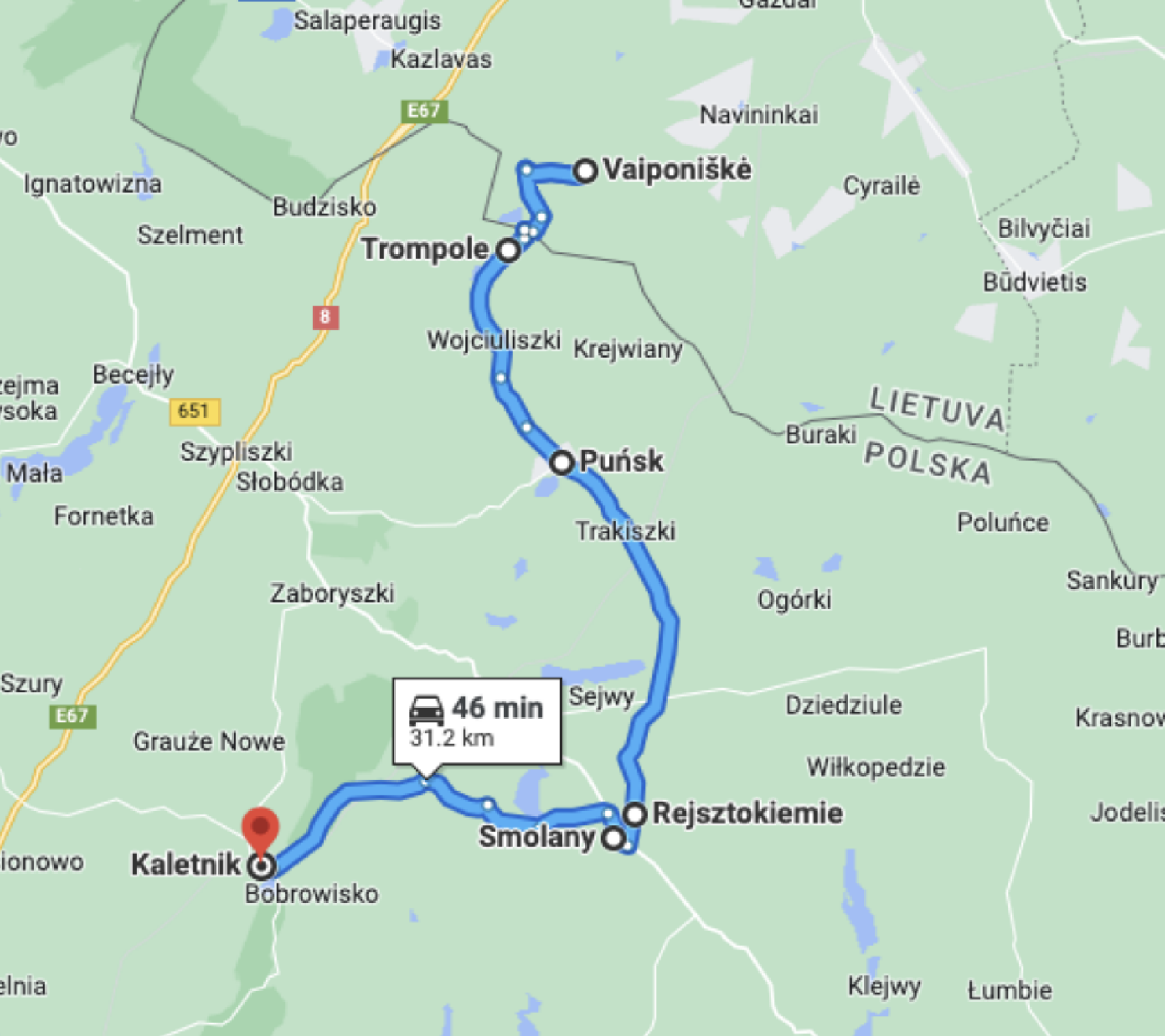
The original birth, marriage and death certificates from Kaletnik and Puńsk are kept in the State Archive in Suwałki.
- The ship manifest of Bronisława Kulpan and her son Alfons Kulpan
- The marriage certificate of Piotr Kulpan and Bronisława Mojżesz
No. 12. It happened in Kaletnik on January 25th / February 7th, 1910 at 2 p.m. In the presence of witnesses, Jan Damulewicz, 46 years old, and Kazimierz Tarnowski, 58 years old, both landowners living in Smolany, it was declared that a religious marriage union was concluded today between:
- Piotr Kulpan, a bachelor, 20 years old, a son of deceased Józef Kulpan and alive Anna née Wiszniewska, born and living in Rejsztokiemie in the administrative district of Smolany3,
- Bronisława Mojżesz, a maiden, 17 years old, a daughter of Władysław Mojżesz and Apolonia née Grzybowska, born and living in Kaletnik at her parents'.
This marriage was proceded by three announcements published in the parish church in Kaletnik on January 23rd, 30th and February 6th this year and in the parish church in Smolany there were only two announcements published on January 30th, and February 6th. The newlyweds declared that they had not concluded any (previous) marriage contract. This act was read to those present and the witnesses, since they were illiterate it was signed only by us (the priest Franciszek Girdowski).
- The birth certificate of Piotr Kulpan
Act 175. Rejsztokiemie. It happened in Puńsk on the 5th/17th day of May, 1889 at 6:00 p.m. Came Józef Kulpan, a farmer, living in Rejsztokiemie, 38 years old, and in the presence of witnesses, Ksawery Zawadzki, 30 years old, and Józef Wiszniewski, 44 years old, both living in Rejsztokiemie, he showed us a male baby born here in Rejsztokiemie today at 3:00 p.m from his wife, Anna née Wiszniewska, 36 years old, and he was given the name Piotr. His godparents were Ksawer Zawadzki and Agata Szymelewicz. This document was read to those present and since they were illiterate, it was signed only by us.
- The birth certificate of Józef Kulpan
Act 92. Wojponiszki. It happened in Puńsk on the 21st day of February, 1850 at 5:00 p.m. Came Marcin Kulpan, a landlord, 32 years old, living in Wojponiszki and in the presence of witnesses, Andrzej Milinkiewicz, 54 years old, and Paweł Burdul, 51 years old, both landlords living here, he showed us a male baby born here today at 12:00 at noon from his wife, Rozalja née Andruszkiewicz, 24 years old, and he was given the name Józef during the baptism ceremony. His godparents were Jan Burdul and Ewa Sobolewska. This document was read to those present and since they were illiterate, it was signed only by us (priest Józef Szumowicz).
- The marriage record of Marcin Kulpan and Roza Andruszkiewicz
No. 61. It happened in Puńsk on November 16th, 1847 at 1 p.m. In the presence of witnesses, Jakub Sokołowski, 30 years old, and Antoni Nowik, 20 years old, both landowners from Wojponiszki, it was declared that a religious marriage union was concluded today between:
- Marcin Kulpan, 31 years old, a servant living in Wojponiszki, born in Trompole, a son of deceased Szymon Kulpan and Anna née Dytkiewicz,
- Roza Andruszkiewicz, a maiden, 22 years old, born and living at her parents' in this village (Wojponiszki) a daughter of Antoni Andruszkiewicz and Apolonia née Walenta,
This marriage was preceded by three announcements published in the parish church in Puńsk on October 31st, November 7th and 14th this year. No one was against it. The newlyweds declared that they had not concluded any (previous) marriage contract. The newlyweds were blessed by priest Jan Głowacki. This act was read to those present and the witnesses, since they were illiterate, it was signed only by us (the priest).
Photographs of the times
Archive of Ethnophotography: Adam Nowicki
Adam Nowicki (born 1936) in the second half of the years in the 1970’s traveled (on foot, with his wife and son, during several summer trips) the entire north-eastern Poland, from Gołdap to Włodawa.
“A few words for pictures”
In 1976, I was invited to a well-organized, multi-day photographic open-air convention in Ełk.
The subject of the open-air convention was the broadly understood landscape of the north-eastern border part of Poland. It was the first time in my life that I found myself in these areas. I was charmed by the beauty of the landscape and the wooden rural architecture embedded in it, often from the 18th and 19th century, as well as the effusive, disinterested kindness of the inhabitants of these lands.
I returned here twice during the summer holidays in ‘78 and ‘79. The few acquaintances made at that time continue to this day. Unfortunately, time took most of the people I met from this world.
With my wife and little son at the time, we walked from Gołdap to Włodawa staying as close as possible to the border with the then USSR because we noticed that more remnants of old times remained there including both the architecture and the way of life of the people. It was there that we found the last hut in Poland, electrified a few years earlier.
No wonder that our route often followed a dirt path along the border, within the sight of Russian border guards sitting on their observation towers.
Shortly after leaving the Romincka Forest, I read in the newspaper about a WOP patrol reporting that we were the cause of a small international conflict. Russian border guards called Moscow informing that there were two people walking on the border with a child (as a deception) and they were surveilling the border. For a long time, at least three times a week, WOPs alerted us near their headquarters presenting ID and trying to turn us back. It was from them that we learned that they were fed up with the calls from Moscow to Warsaw, which sends them out into the field. Under the guise of not having written consent to move in the border zone, they wanted to take us out of it. But as a resident of Gdańsk (also situated on the border), I did not have to have such consent, as evidenced by my ID card, and such an attempt would be illegal. That way, we could continue to do our job. They were ordered to come again later to find us and pass information about us to the neighboring [military] facility, already knowing our route, this time knowing why we are wandering along the border. Our contacts became almost friendly.
In the years 1978 and ‘79 my basic photographic archive of these areas was created. Going from village to village, we tried to live closely with the people who lived there. We slept with them in barns, at our insistent requests, or with them in a hut, when they decided that it was not right for us to sleep in the barn because: What would the neighbors say about them? We used to go out to work together in the fields, as it was harvest time. Our co-workers were poor. Trying to live among them and with them, it was easier not only to photograph, but also to understand what was being photographed. It was hard [to part ways.] They often gave eggs and bacon, refusing to let us pay for anything, even though we insisted.
While photographing, I tried to capture the atmosphere known from old Polish paintings and photographs. What in other regions of the country has been preserved in a few open-air museums, torn out of the landscape and “improved” for the purposes of the exhibition, existed here in [authentic] scenery. I did not think that what I photograph would completely disappear from our landscape so quickly. Not all photos have information about the exact location where they were taken. It did not occur to me then that years later it could be very important and memory would become so unreliable. After all, I photographed only for my own pleasure, to keep in mind the related experiences.
Today I regret that at that time I did not make precise notes, which today would allow me to accurately identify the place of each photo taken. Although the order of photos in the film, marked on the maps of our route, and the notes on most of the preview images taken at that time, today allow for the precise location of the vast majority of photos.
I photographed on the films ORWO and FOTONU with cameras then popular in Poland, which were Zenit 3M and Zenit B cameras with a set of 3 interchangeable lenses.
Numerous slide shows, including color ORWO slides, were processed in-house and withstood the passage of time very badly. Until today, when the time has come to scan them, they have survived with more or less visible shifting of colors and a partial loss of their saturation. Fortunately, modern software allows you to largely compensate for these losses during computer processing.
Most of the objects photographed there at that time no longer exist, some villages and hamlets have disappeared, and the landscape has changed significantly in some places. Even towns such as Tykocin, Suwałki, Sejny or Puńsk do not resemble those anymore.
The climates that charmed me - passed with the wind …
Nothing pulls me this way anymore. I don’t want to blur my memories.
—Adam Nowicki, December 2010
Adam Nowicki: Trompole (at the Żardecki family) (1978). Source.
Adam Nowicki: Puńsk - in the bakery (1978). Source.
Adam Nowicki: Suwałki (1978). Source.
-
née is defined as: originally called; born (used especially in adding a woman’s maiden name after her married name). ↩︎
-
The place of birth might refer to the Lugii region. The Lugii (or Lugi, Lygii, Ligii, Lugiones, Lygians, Ligians, Lugians, or Lougoi) were a large tribal confederation mentioned by Roman authors living in ca. 100 BC–300 AD in Central Europe, north of the Sudetes mountains in the basin of upper Oder and Vistula rivers, covering most of modern southern and middle Poland (regions of Silesia, Greater Poland, Mazovia and Lesser Poland). Source. ↩︎
-
There is another village called Rejsztokiemie in the administrative district of Puńsk. ↩︎













